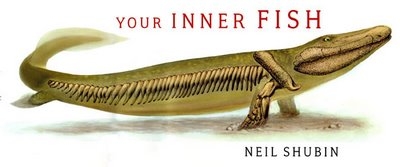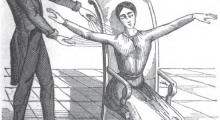
“When you look into eyes, forget about romance, creation, and the windows into the soul. With their molecules, genes, and tissues derived from microbes, jellyfish, worms, and flies, you seen an entire menagerie.”
Eyes are some of the aforementioned soft tissues that very rarely makes it onto the fossil record. To understand their history, we have to look at the parts that make them up, which all have their own story. Together, they make sort of mosaic, a whole image that’s made up of bits of pieces. Shubin likens them to a piece of machinery like a car:
Take a Chevy Corvette, for example. We can trace the history of the model as a whole — the Corvette — and the history of each of its parts. The ‘Vette has a history, beginning with its origins in 1953 and continuing through the different model designs each year. The tires used on the ‘Vette also have a history, as does the rubber used in making them… Our eyes have a history as organs, but so do eyes’ constituent parts, the cells and tissues, and so do the genes that make those parts.”
The job of the eyes is to capture light and deliver it to the brain, where it can be processed into a sensible, three-dimensional image. Vertebrates have eyes that are similar to our pre-digital cameras. Light enters the eye, passing through several layers of tissue, such as the cornea, the iris, and the lens. These layers are controlled by tiny, involuntary muscles, and change the amount of light and focus the image before it hits the retina, a sort of screen in the back of the eye onto which the image is projected. The retina absorbs the light using proteins called opsins.
All animals use opsins. Humans, caterpillars, zebras, squids, clams: all animals have the same kind of light-absorbing molecule, despite the amazing diversity in photoreceptor organs.
Opsins take a very familiar path across cellular membranes to convey information. Certain molecules in bacteria take similar paths, which suggests that this is a record of our past as microbial organisms.
Another of these “living bridges” was found in 2001, when the study of a very primitive worm, a polychaete, yielded a surprising discovery. Polchaetes have distinct characteristics of both vertebrate and invertebrate photoreception. The eyes of the worms themselves are, in appearance and function, like most invertebrate eyes. Underneath its skin, however, it has a secondary set of photoreceptors that chemically and structurally resemble those of vertebrates.
Geneticists later discovered that even the genes for eye development are incredibly similar.
By studying mutant fruit flies that were born eyeless, they were able to isolate the genes that were responsible for growing eyes. They then experimented with activating this genetic sequence, called eyeless, in places where it was normally inactive: antennae, body segments, anywhere they activated the gene, an eye would grow. These eyes even showed some ability to respond to light.
They could even transplant this genetic sequence from other species. Walter Gehrig transplanted the eyeless equivalent from a mouse into a fruit fly, and activated it. Not only did the tissue produce an eye, but it produced the eye of a fruit fly.








